.png)
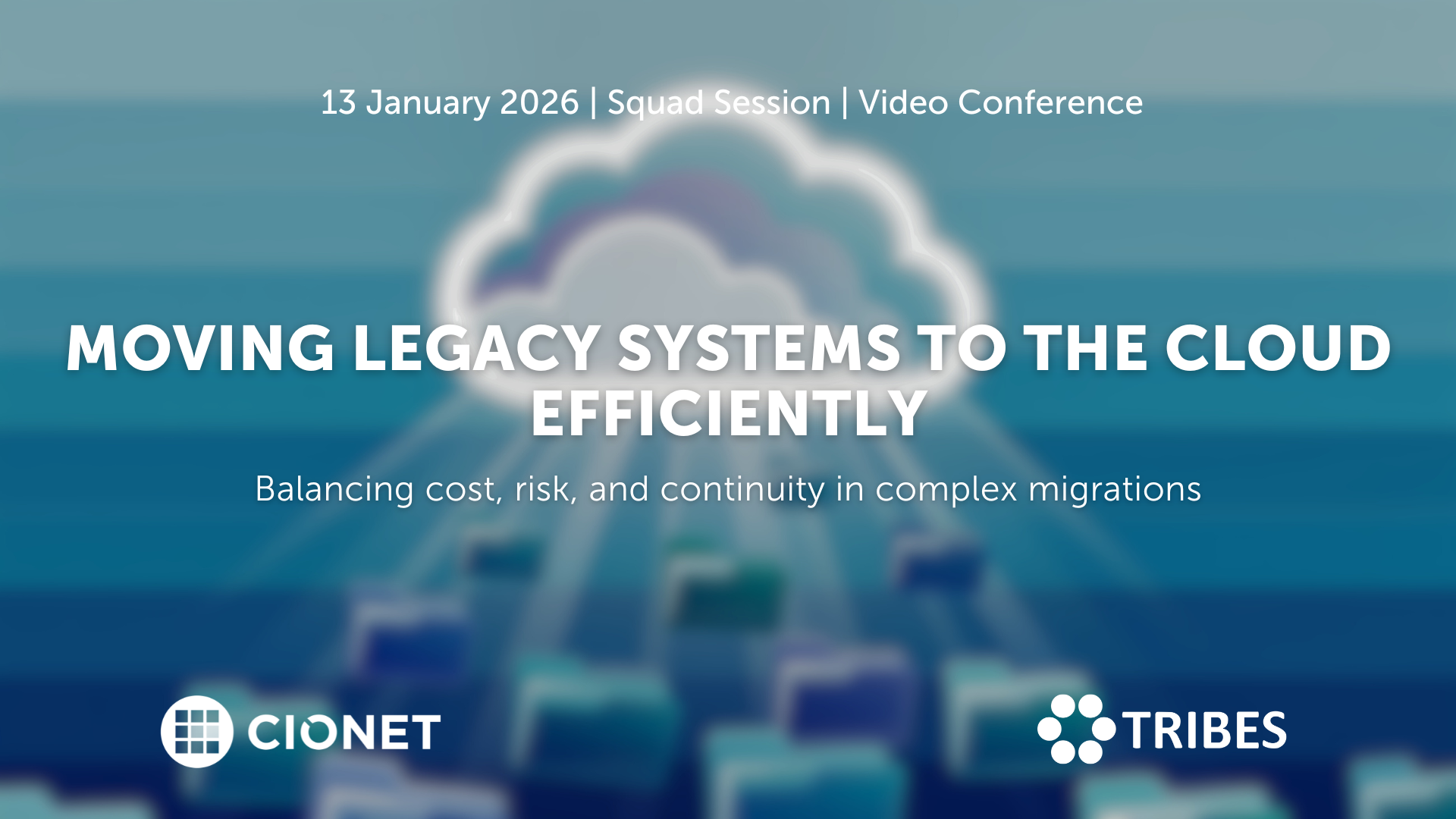
Belgium 13-1-26 Squad Only Virtual english
Migrating legacy systems to the cloud remains one of the toughest balancing acts in IT. Every choice affects stability, cost, and trust at once, and what starts as a modernisation effort quickly turns into a negotiation between ambition and reality. Suddenly budgets rise, dependencies appear late, and timelines tighten as old architectures collide with new expectations. In the end, success depends on sequencing, ownership, and aligning business priorities with infrastructure limits, and not only on technical readiness. Making it work requires more than a plan on paper. Knowing which systems genuinely belong in the cloud, which can wait, and which should stay put shapes the entire roadmap and defines its success. Each refactoring decision sets the level of future flexibility, but it also drives cost and risk. The trade-offs between speed, sustainability, and resilience only become clear once migration begins and pressure builds. Let’s discuss how to plan migrations that stay on track, manage hidden dependencies, and handle downtime with confidence. Let’s also discuss how governance, testing, and vendor coordination keep progress visible and credible. Are you in? A closed conversation for those who turn cloud migration from a disruption into a long-term advantage.
Read More.png)
Belgium 20-1-26 All Members Physical english
CIOs today are being judged less as technology leaders and more as portfolio managers. Every euro is under scrutiny. Boards and CFOs demand lower run costs, higher efficiency, and clear ROI from every digital initiative. Yet, they also expect CIOs to place bets on disruptive technologies that will keep the enterprise competitive in five years. This constant tension is redefining the role. In this session, we go beyond FinOps and cost reporting to tackle the strategic financial dilemmas CIOs face.
Read More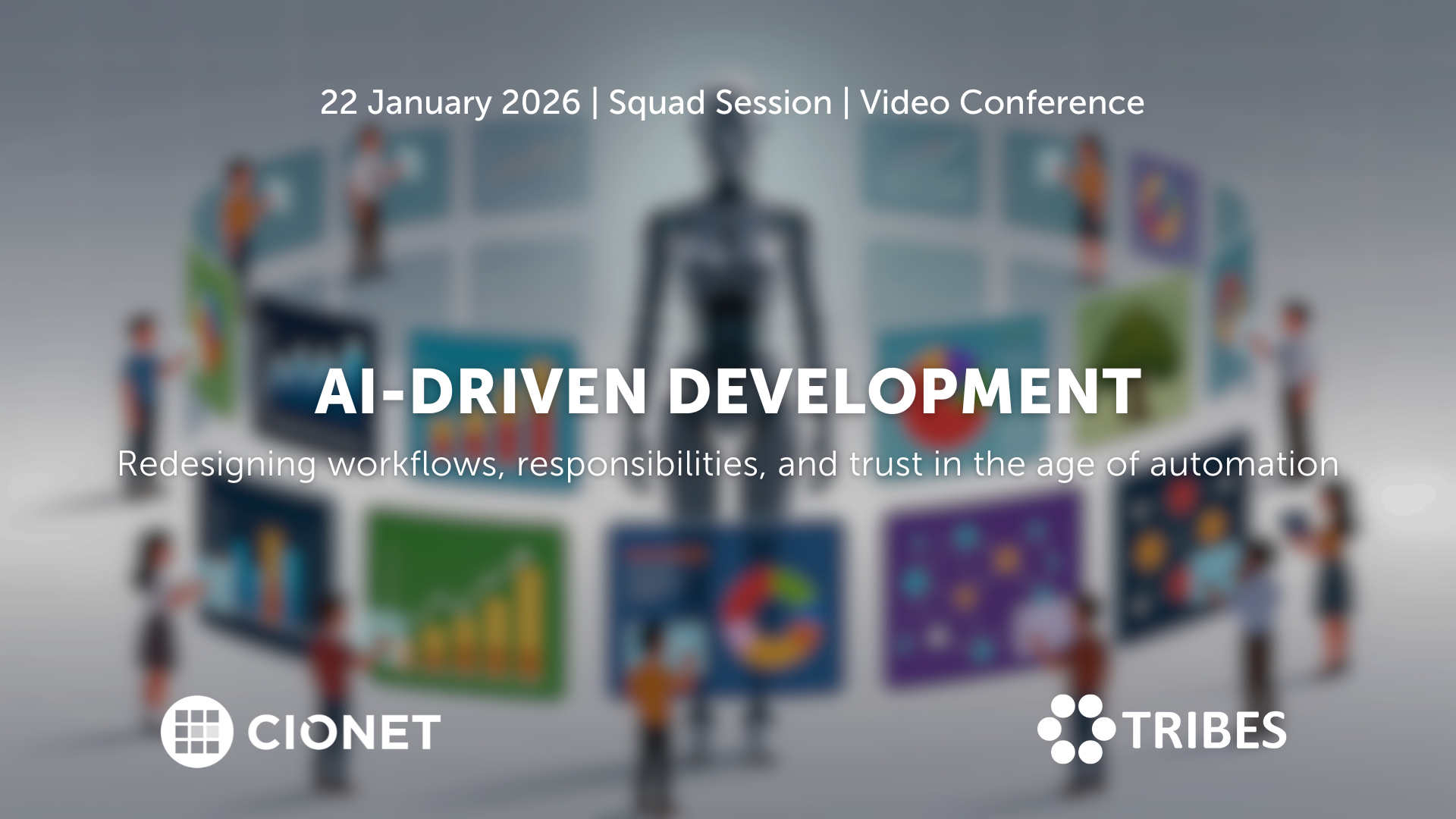
Belgium 22-1-26 Invitation Only Virtual english
AI coding assistants entered development teams quietly, but their impact grows by the day. What started as autocomplete now shapes architecture decisions, documentation, and testing. And when productivity gains are visible, so are new risks: security blind spots, uneven quality, and the slow erosion of shared standards. Teams move faster, but not always in the same direction. The challenge has become integration rather than adoption. And new questions have risen: how do you blend automation into established practices without losing oversight? When is human review still essential, and what should the rules of collaboration between developer and machine look like? As AI tools learn from proprietary code, where do responsibility and accountability sit? Let’s talk about how to redefine those workflows, balancing creativity with control, and protecting code quality in a hybrid human-AI environment. A closed conversation on where AI accelerates progress, where it introduces new debt, and how development culture must evolve to stay credible.
Read More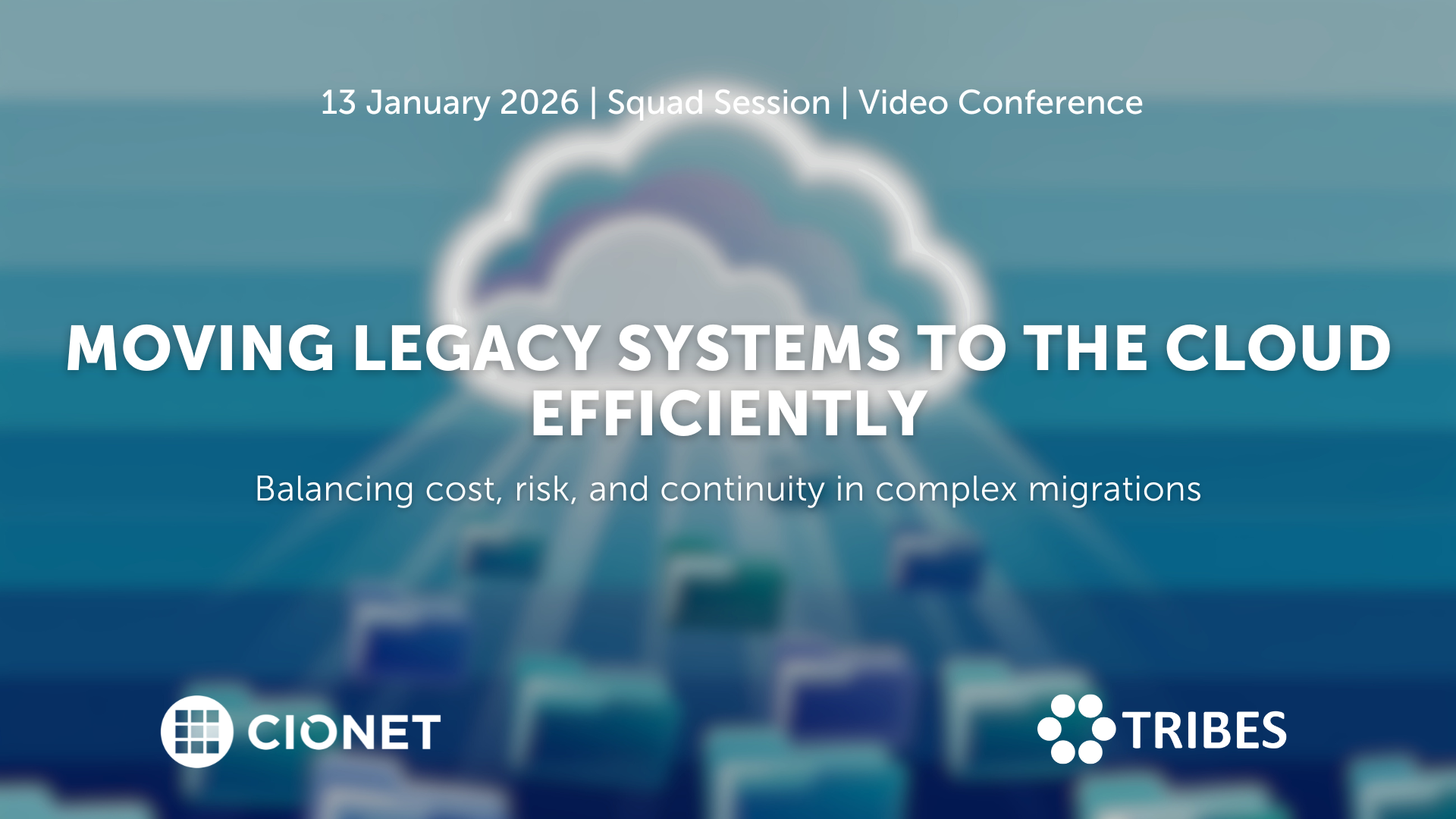
January 13, 2026 Squad Session Invitation Only Virtual english
Migrating legacy systems to the cloud remains one of the toughest balancing acts in IT. Every choice affects stability, cost, and trust at once, and what starts as a modernisation effort quickly turns into a negotiation between ambition and reality. Suddenly budgets rise, dependencies appear late, and timelines tighten as old architectures collide with new expectations. In the end, success depends on sequencing, ownership, and aligning business priorities with infrastructure limits, and not only on technical readiness. Making it work requires more than a plan on paper. Knowing which systems genuinely belong in the cloud, which can wait, and which should stay put shapes the entire roadmap and defines its success. Each refactoring decision sets the level of future flexibility, but it also drives cost and risk. The trade-offs between speed, sustainability, and resilience only become clear once migration begins and pressure builds. Let’s discuss how to plan migrations that stay on track, manage hidden dependencies, and handle downtime with confidence. Let’s also discuss how governance, testing, and vendor coordination keep progress visible and credible. Are you in? A closed conversation for those who turn cloud migration from a disruption into a long-term advantage.
Read More
January 22, 2026 Squad Session Invitation Only Virtual english
AI coding assistants entered development teams quietly, but their impact grows by the day. What started as autocomplete now shapes architecture decisions, documentation, and testing. And when productivity gains are visible, so are new risks: security blind spots, uneven quality, and the slow erosion of shared standards. Teams move faster, but not always in the same direction. The challenge has become integration rather than adoption. And new questions have risen: how do you blend automation into established practices without losing oversight? When is human review still essential, and what should the rules of collaboration between developer and machine look like? As AI tools learn from proprietary code, where do responsibility and accountability sit? Let’s talk about how to redefine those workflows, balancing creativity with control, and protecting code quality in a hybrid human-AI environment. A closed conversation on where AI accelerates progress, where it introduces new debt, and how development culture must evolve to stay credible.
Read More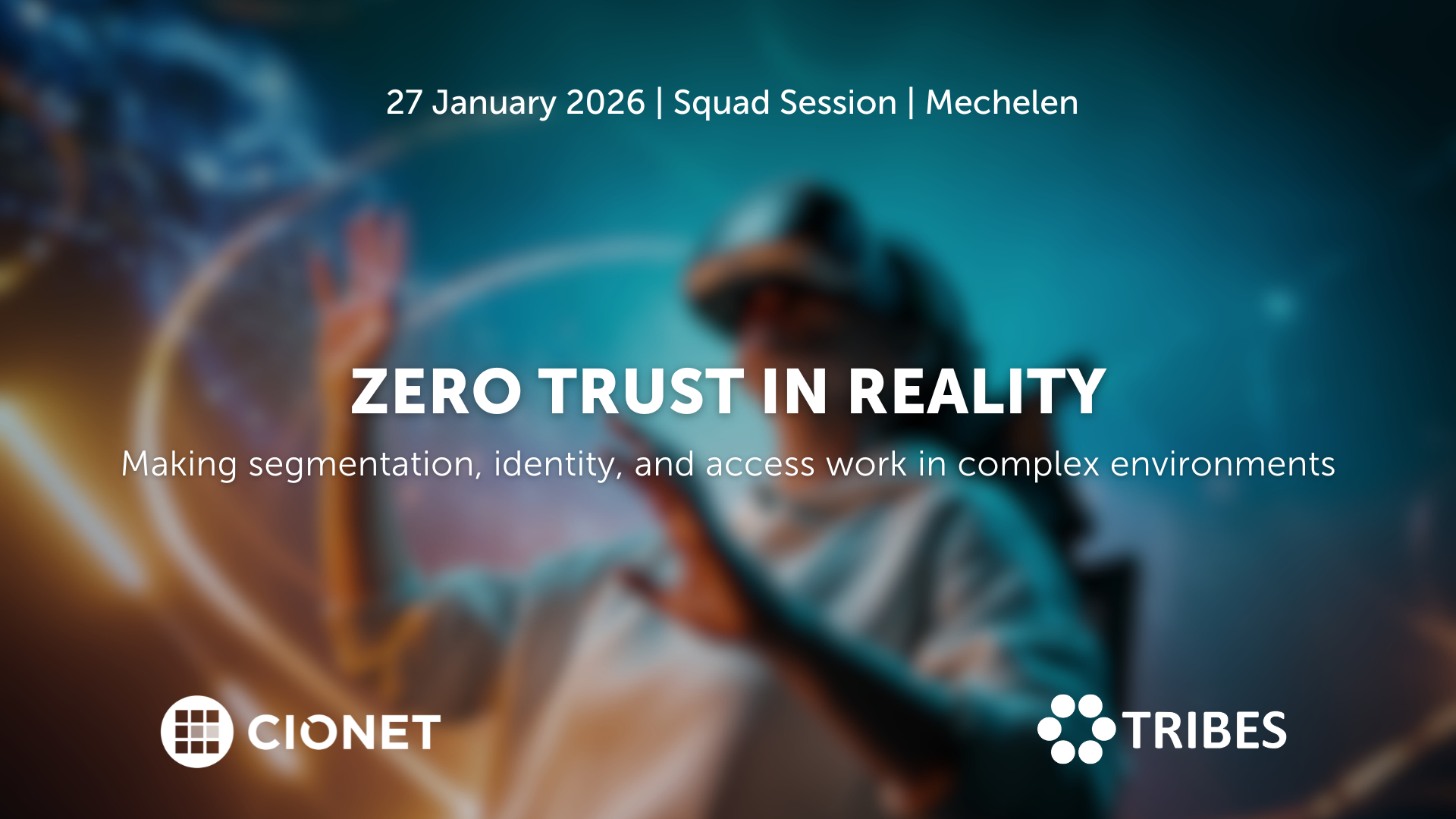
January 27, 2026 Squad Session Invitation Only Physical english
Zero Trust sounds simple on paper: trust no one, verify everything. But once you start implementing it, the fun begins. Legacy systems, hybrid networks, and human habits don’t read the manual. The idea is solid; the execution, not so much.
Read More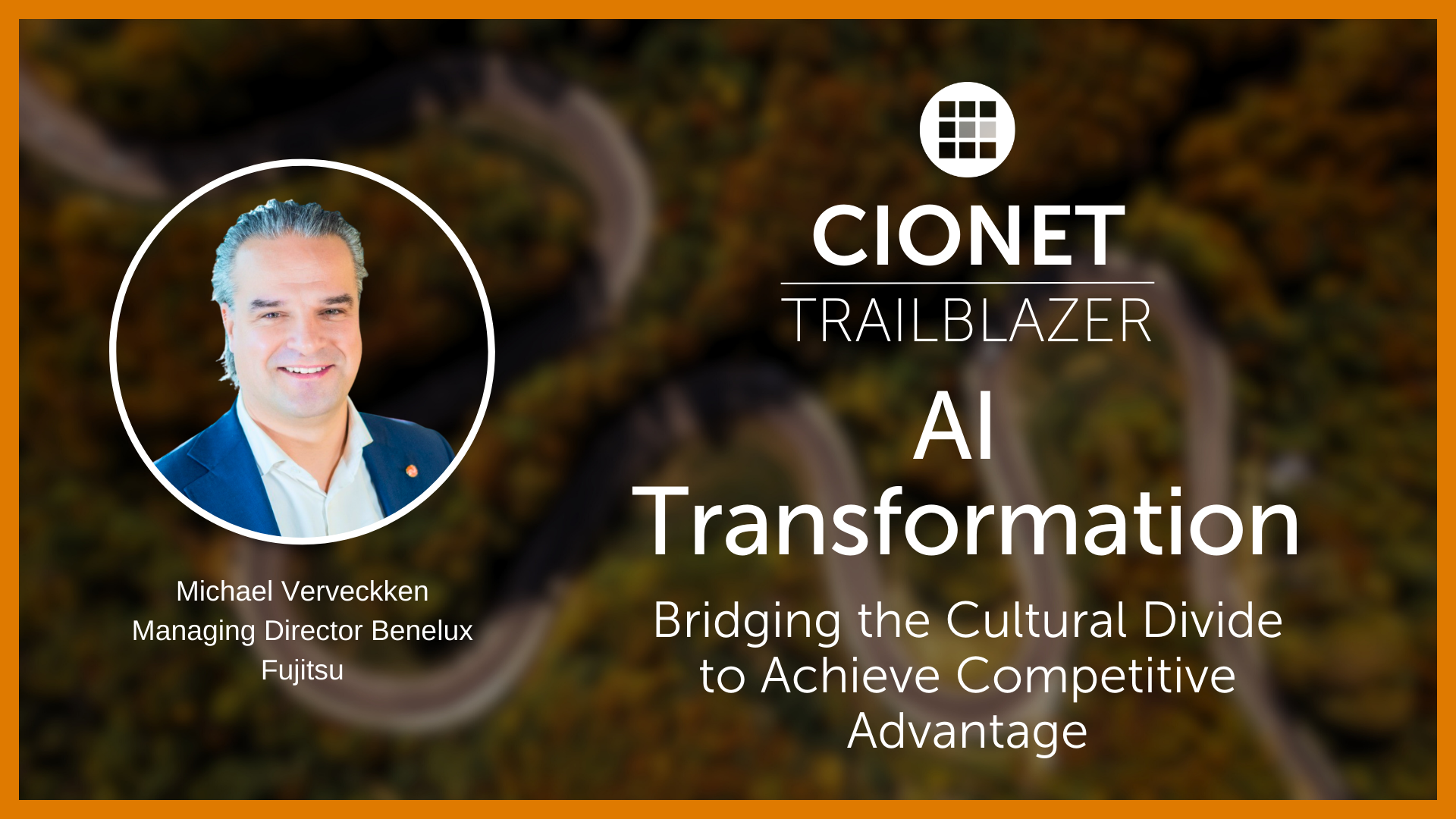
CIONET Trailblazer: AI Transformation: Bridging the Cultural Divide to Achieve Competitive Advantage
Published on: December 17, 2025 @ 9:16 AM
The Buyer’s Guide to IT Transformation
Find the right EAM/SPM tool to support your IT transformation with this comprehensive buyer's guide. Know what to look for when comparing different solutions on the market, explore common use cases, and get familiar with the seven core capabilities of successful EAM/SPM platforms.
“All business is IT—all IT is business.” Today, as business success is increasingly defined by the speed of innovation, there’s more truth than ever to Gartner's findings that all business is IT—all IT is business. As the world becomes more digital, and customer expectations change at ever faster rates, your IT needs to change as well—to incorporate the new technologies that will make your enterprise stand out from the competition.
How, though, can you ensure your IT portfolio is in line with your business objectives? Increasingly, companies are turning to support their enterprise architecture management (EAM) and strategic portfolio management (SPM) practices with made-for-purpose software tools that can handle the massive complexity inherent in today’s IT. A tool-based approach enables you to visualize the cost, complexity, and feasibility of a proposed IT change, and how it relates to your vision for the future.
As will be explained in the competitive landscape overview, integrating the enterprise architecture management (EAM) and strategic portfolio management (SPM) disciplines significantly increases the number and quality of IT insights. According to Gartner:
There are tools that span both practices, and it’s important to consider both. That’s why this guide often addresses both enterprise architecture management and strategic portfolio management “EAM/SPM”.
This guide is designed to help you find the right EAM/SPM tool to support your IT transformation endeavors. We will help you understand what an EAM/SPM platform does best, figure out what capabilities you want, and justify your choice within the scope of your organization’s needs and budget. It is divided into five sections.
First, we’ll help you understand what enterprise architecture management (EAM) and strategic portfolio management (SPM) platform buyers are typically looking for. We’ll then explore some of the key differences between the solutions available on the market. After that, we’ll take a look at some common EAM/SPM use cases and probe deeper into the seven core capabilities you’ll want to have for use across your transformation projects. Finally, we’ll give you some tips to begin your EAM/SPM journey—and move toward the choice of a platform.
With so many competing tools and providers on the market, identifying the solution that will best meet your enterprise’s needs can be difficult. From our experience, however, there are several things that users seeking IT transformation are typically after.
An important step in finding the right EAM/SPM tool is assessing the strengths and weaknesses of the different players on the market. This process is often informed by past frustrations: many firms come to EAM/SPM after struggling for years to inventorize their IT, track projects and prioritize investments with PowerPoints or disconnected spreadsheets. Modeling tools, such as MS Visio, are another attempt to get visibility into the IT landscape, but they’re also incapable of handling large and diverse inputs of data that range from strategies to technology solutions, to investments, and KPIs.
The need to gather high quality data from a range of sources means that integration and data management are a key part of the picture. This leads some firms to look to business intelligence solutions, which often come with powerful data management capabilities. These tools, however, lack many of the core architecture capabilities of EAM/SPM itself—which means they need to be developed and maintained in-house, driving up costs and diverting attention from what matters most: building a thriving business.
You may also be enticed by software in other EAM/SPM “adjacent” markets, such as IT service management, configuration management database, or IT asset management. Often vendors of these products claim to cover EAM/SPM too—and if you’ve already installed their software for other uses, giving this a try could seem expedient and cost-efficient. For similar reasons, some users find it tempting to “sew together” EAM/SPM capabilities from multiple products they’ve already acquired.
If you’re considering either of these paths, we’d recommend you challenge vendors on the seven core capabilities discussed in the next section—and consider the advantages of having them natively integrated in one product. A decision to skimp on a made-for-purpose EAM/SPM solution won’t seem so cost-effective down the line if this mixed bag approach fails to deliver, and your enterprise is forced to start anew. If you’ve decided—wisely—to pursue an EAM/SPM-specific solution, you still have a choice between solutions geared toward each discipline and those that integrate the two into a single product. EAM-specific tools will give you a single source of truth—to simplify your IT landscape, understand the implications of IT change, and anticipate system disruptions before they do damage to your business. SPM-specific tools will help you connect the dots between IT change and your strategic goals—a process accomplished through portfolios that link all elements of your IT architecture to a clear functional purpose.
Although both types of tools provide value as stand-alone products, we strongly recommend a solution that incorporates both. Enterprise architecture management, after all, is most impactful when it’s used as a foundation for SPM-driven change impact discoveries. And strategic portfolio management works best when its portfolios are based on the interdependencies identified by EAM—enabling the enterprise to more boldly pursue business opportunities, defend its market position, and build greater resilience to operational risks.
This function pulls together information from various sources to build an iterated business strategy. The point is to generate a clear line of sight between the organization’s high-level vision and its implementation. Business strategy development includes:
Once you’ve built your business strategy, the next step is designing a more detailed operating model. Effectively, this is a road map for changes to your business capabilities, processes, and broader organization. This includes:
Today’s rapidly changing business environment requires agile delivery of IT services and products—with transparency, analytics, and feedback from stakeholders at all levels of the organization. An EAM/SPM approach to agile transformation offers:
This function helps enterprises organize, and optimize, their IT to set the pace for change. Creating a tightly integrated IT portfolio reduces planning errors, helps stakeholders collaborate, and provides transparency that helps users avoid conflicts. IT portfolio management includes:
This capability provides the underlying tools needed to ensure effective EA discipline—which in turn leads to greater agility and reduced costs and risks. It includes:
This function helps organizations optimize their IT with an eye toward cutting costs and ensuring new IT investments add value to their business. It includes:
An integral part of aligning business and IT is the management of risk—and achieving greater efficiencies in compliance control. Important capabilities include:
The number of capabilities outlined above may feel overwhelming. The broad scope of enterprise architecture management and strategic portfolio management can certainly be daunting. And, truth be told, there are rare instances of companies that execute fully on all activities. What’s most important is that you view these capabilities as a means to an end: supporting the job that needs to be done today. The job could be planning a cloud migration strategy, positioning the enterprise against cyber threats, or determining how a new technology might advance your business strategy. It doesn’t matter which: once you’ve captured your enterprise architecture as the basis for any of these or other uses, you’ve taken a critical first step that will lay the foundation for other “ends” in the future.
The most common entry point into EAM/SPM is application rationalization. Many companies want to cut costs and get rid of the clutter. A logical next step is to better understand the technologies supporting the application portfolio—to see where it’s possible to rationalize the technology portfolio, and standardize to increase agility. From there, many move on to a more critical examination of their business capabilities and processes before turning to their project and product portfolios: most, in other words, attempt to first get transparency.
It's important to keep in mind, of course, that every enterprise is different. Some may begin their journey with a very specific goal; others may find it helpful to start with basic questions, such as: “What is in our application portfolio?”; “Who are our technology owners?”; or “What is our business IT alignment?” For companies with little or no prior experience in enterprise architecture or strategic portfolio management, it may make sense to seek out a vendor that offers an entry-level solution—one with a just a few functional capabilities, pre-configured views and prescribed data for these sorts of common questions. Tackling the basics will often lead to a desire to ask more complicated questions—say, “How do we realize greater cost efficiencies?” or “How can we make savvier IT investments?” At this point, you’ll likely want to upgrade to a tool with a broader scope of capabilities and more configuration options. Ideally, then, the solution that you start with should offer the ability to scale up as seamlessly as possible.
As we’ve already discussed, EAM/SPM acts like a guardian of IT change—one that helps you simplify your IT landscape and make decisions driven by insights to accelerate your business strategy. But what, exactly, does this mean in practice? A 2020 study by Aite Group, a technology advisory, offers some idea of what you’ll gain with the right product. Its research, based on deployments at 11 large organizations of Alfabet, Software AG’s industry-leading EAM/SPM platform, identified several direct benefits, including cost reductions brought on by the avoidance and elimination of redundant assets, increased purchasing power, decreased project rework, and reduced headcount. Indirect benefits included improved compliance, enhanced enterprise security, improved knowledge propagation, and reduced operational risk.
Users of Alfabet interviewed by Aite’s research team offer a sense of what this means at the individual enterprise level. One noted their organization was on track to reduce application costs by 50%. Others praised the platform for helping their firm “avoid costly technology sprawl” and noted its ability to provide “continuous course corrections,” while channeling investment into the systems and applications that matter most. As one user in the utilities sector put it best: “Here, every project and investment goes through an objective intake process, enabled in Alfabet, in which mission criticality is formally assessed. This way, cool, hyped, or favored technologies don’t take money from what we rely on.” In other words, Alfabet allows this user’s enterprise to cut through the noise and focus on the IT that matters most.
Are you ready to finally take control of your IT? To ensure your IT landscape is agile, cost-efficient, free of risk, and, above all, a driver of business success? If you’re still reading this, we suspect the answer is yes. And we hope this guide has helped demystify the process—to unpack exactly what you want in an enterprise architecture management (EAM) and strategic portfolio management (SPM) platform and how the capabilities embedded in such a tool can prepare your enterprise for such a wide array of transformation projects.
The information in this guide should be of help no matter the EAM/SPM solution you ultimately decide on. That said, we suspect there’s a good chance that Alfabet could be the platform that you’re after—whether you’re a small business looking for a risk-free way to learn what EAM/SPM is all about, or a large organization ready to dive head on into an enterprise-class solution. Whether installed on-premises, or deployed as SaaS, Alfabet will help you invest wisely by optimizing your IT landscape and collaboratively planning for the future. And we’re not the only ones who’ll point you to it: in its 2022 Magic QuadrantTM for Strategic Portfolio Management, Gartner named Software AG as a Leader.
Would you like to learn more about how Alfabet can kick-start your IT transformation journey? Get in touch: we’d be happy to share more of our expertise.
11 Views 0 Likes Read More

Digital Transformation is redefining the future of health care and health delivery. All stakeholders are convinced that these innovations will create value for patients, healthcare practitioners, hospitals, and governments along the patient pathway. The benefits are starting from prevention and awareness to diagnosis, treatment, short- and long-term follow-up, and ultimately survival. But how do you make sure that your working towards an architecturally sound, secure and interoperable health IT ecosystem for your hospital and avoid implementing a hodgepodge of spot solutions? How does your IT department work together with the other stakeholders, such as the doctors and other healthcare practitioners, Life Sciences companies, Tech companies, regulators and your internal governance and administrative bodies?
Read More
The Telenet Business Leadership Circle powered by CIONET, offers a platform where IT executives and thought leaders can meet to inspire each other and share best practices. We want to be a facilitator who helps you optimise the performance of your IT function and your business by embracing the endless opportunities that digital change brings.
Read More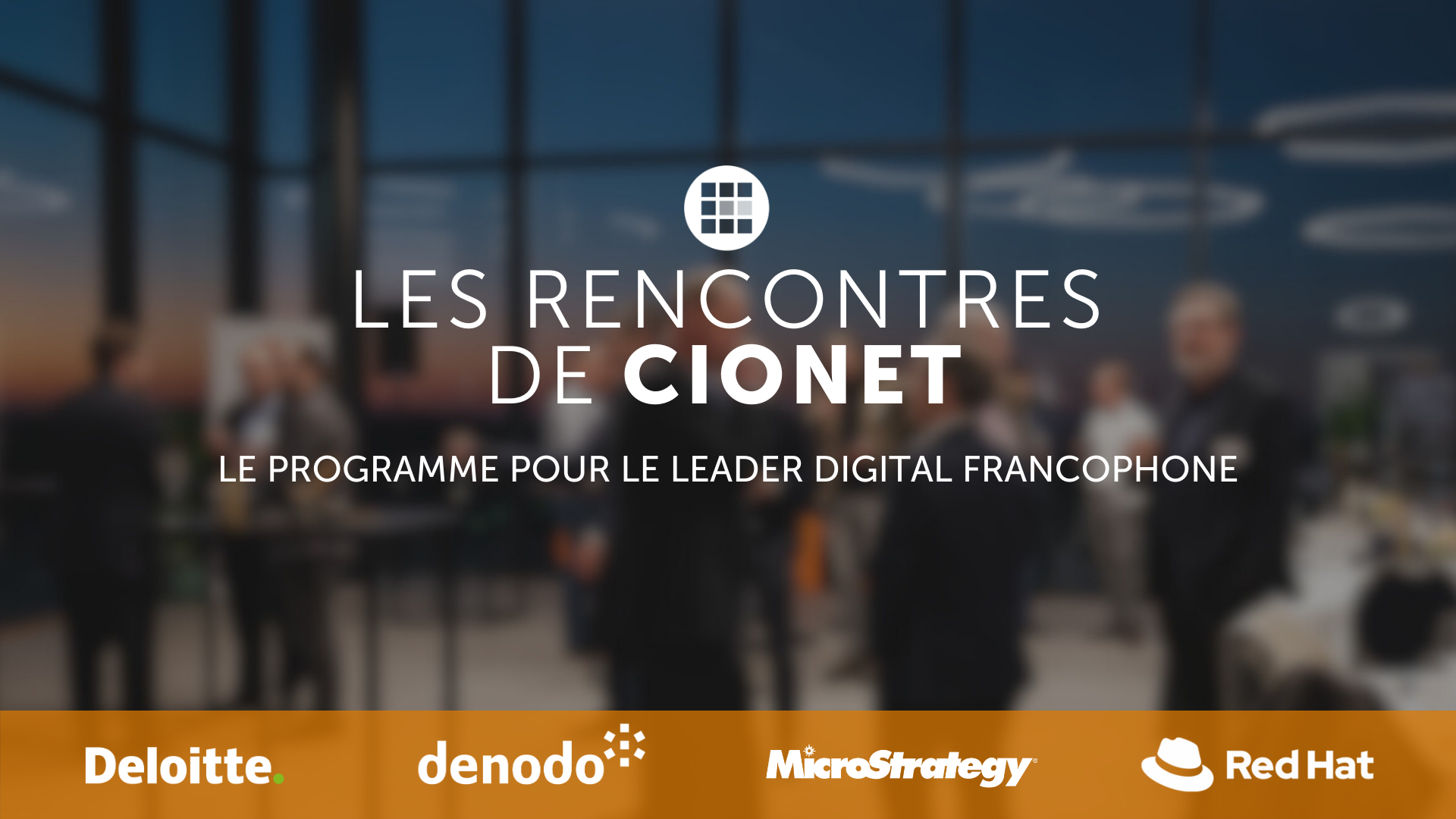
Découvrez la dynamique du leadership numérique aux Rencontres de CIONET, le programme francophone exclusif de CIONET pour les leaders numériques en Belgique, rendu possible grâce au soutien et à l'engagement de nos partenaires de programme : Deloitte, Denodo et Red Hat. Rejoignez trois événements inspirants par an à Liège, Namur et en Brabant Wallon, où des CIOs et des experts numériques francophones de premier plan partagent leurs perspectives et expériences sur des thèmes d'affaires et de IT actuels. Laissez-vous inspirer et apprenez des meilleurs du secteur lors de sessions captivantes conçues spécialement pour soutenir et enrichir votre rôle en tant que CIO pair. Ne manquez pas cette opportunité de faire partie d'un réseau exceptionnel d'innovateurs numériques !
Read More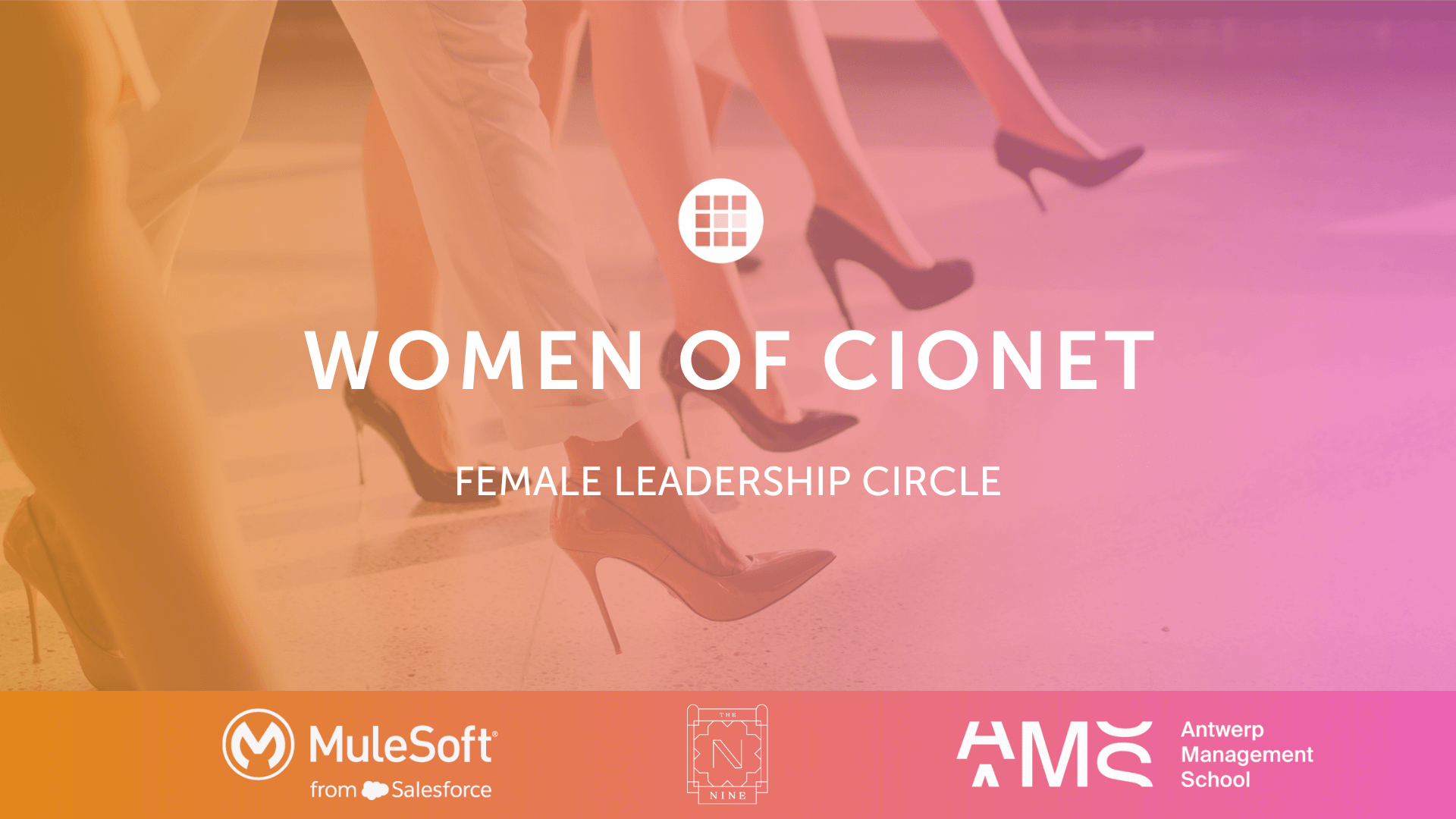
CIONET is committed to highlighting and celebrating female role models in IT, Tech & Digital, creating a leadership programme that empowers and elevates women within the tech industry. This initiative is dedicated to showcasing the achievements and successes of leading women, fostering an environment where female role models are recognised, and their contributions can ignite progress and inspire the next generation of women in IT. Our mission is to shine the spotlight a little brighter on female role models in IT, Tech & Digital, and to empower each other through this inner network community.
Read More


-Apr-01-2022-10-58-34-57-AM.png)








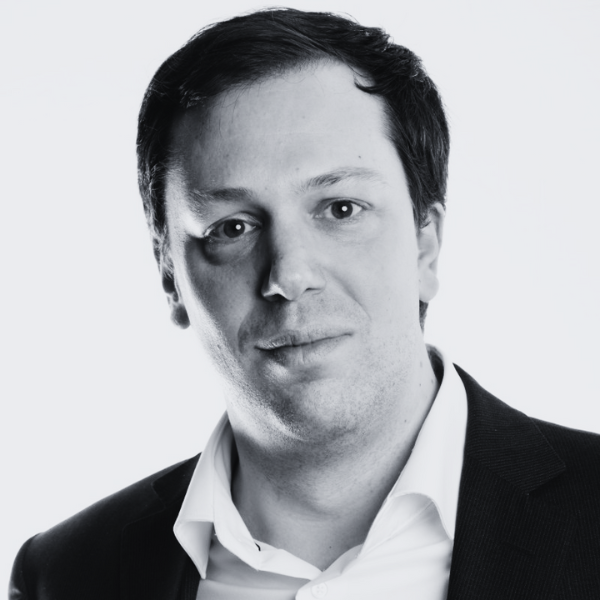


-Dec-13-2023-10-53-15-5032-AM.png)




-Jun-12-2023-01-23-11-7540-PM.png)





-Apr-01-2022-10-58-34-68-AM.png)










-2.jpg)




-Sep-01-2022-02-47-55-60-PM.png)
-Nov-22-2023-08-56-42-6802-AM.png)
.png)

Would you like to know more about CIONET Belgium, membership or partnership opportunities? Do you have feedback or any other question? Send us a message!
You can either send us a registered handwritten letter explaining why you'd like to become a member or you can simply talk to us right here!